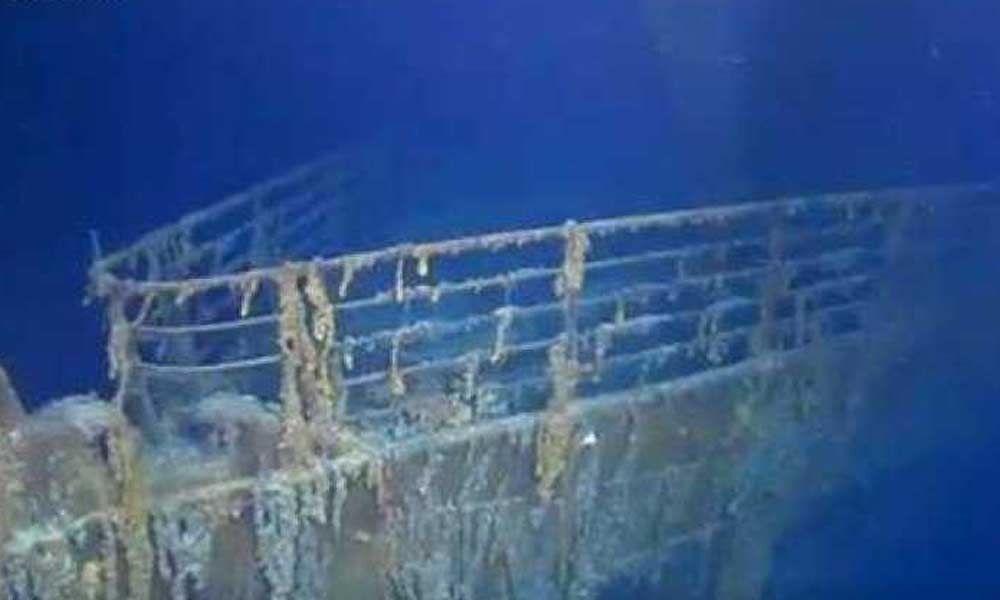Live
- Must-Watch OTT Originals in 2024: The Year’s Best Shows and Movies
- 40 Indian startups secure over $787 mn in a week
- India now formidable force on chess board
- Raghavendra Mutt pontiff visits Tirumala
- Whistleblower of OpenAI found dead in US apartment
- Trump’s US-first policy & India’s strategic latitude
- Chandrababu pays tribute to Potti Sriramulu and Sardar Vallabhbhai Patel
- India may miss TB elimination target
- Revolutionizing Women’s Health: The Era of AI
- Govt bill explains plan for ONOE
Just In
Titanic being lost to sea: First manned dive in 14 years reveals


The Titanic expedition was carried out by the same team that recently made the deepest-ever plunge to the bottom of the Mariana Trench, which lies nearly 12 km down the Pacific Ocean.
LONDON: Some parts of the wreckage of the Titanic that sank over 100 years ago in the Atlantic Ocean is deteriorating rapidly, according to an international team of deep-sea explorers.
Strong ocean currents, salt corrosion and metal-eating bacteria are attacking the ship, which sank in 1912 on its maiden voyage.
While parts of the wreck, which lies 3,800m down in the Atlantic, were in surprisingly good condition, other features had been lost to the sea, the team found over the course of five submersible dives, the BBC reported on Wednesday.
The worst decay was seen on the starboard side of the officers' quarters.
Titanic historian Parks Stephenson said some of what he saw during the dive was "shocking".
"The captain's bathtub is a favourite image among Titanic enthusiasts - and that's now gone," he said.
"That whole deckhouse on that side is collapsing, taking with it the staterooms. And that deterioration is going to continue advancing."
He said the sloping lounge roof of the bow section would probably be the next part to be lost, obscuring views of the ship's interior.
"Titanic is returning to nature," he added.
The Titanic has been underwater for more than 100 years, lying about 600km off the coast of Newfoundland, Canada.
The passenger liner, which was the largest ship of its time, hit an iceberg on its maiden voyage from Southampton to New York in 1912.
Of the 2,200 passengers and crew on board, more than 1,500 died.
The Titanic expedition was carried out by the same team that recently made the deepest-ever plunge to the bottom of the Mariana Trench, which lies nearly 12 km down the Pacific Ocean.
The dives have been filmed by Atlantic Productions for a forthcoming documentary, the report said.
As well as capturing footage, scientists on the expedition have also been studying the creatures living on the wreck.
Despite the near-freezing conditions, pitch-black waters and immense pressure, life is thriving there.
This though, said expedition scientist Clare Fitzsimmons, from Newcastle University, was a factor in the Titanic's decay.
"There are microbes on the shipwreck that are eating away the iron of the wreck itself, creating 'rusticle' structures, which is a much weaker form of the metal," she said.
These rusticles - stalactites of rust hanging off the wreck - are so fragile that they can crumble into a cloud of dust if disturbed.
The scientists are studying how different types of metal erode in the deep Atlantic waters, to assess how much longer the Titanic has left, the report said.

© 2024 Hyderabad Media House Limited/The Hans India. All rights reserved. Powered by hocalwire.com






